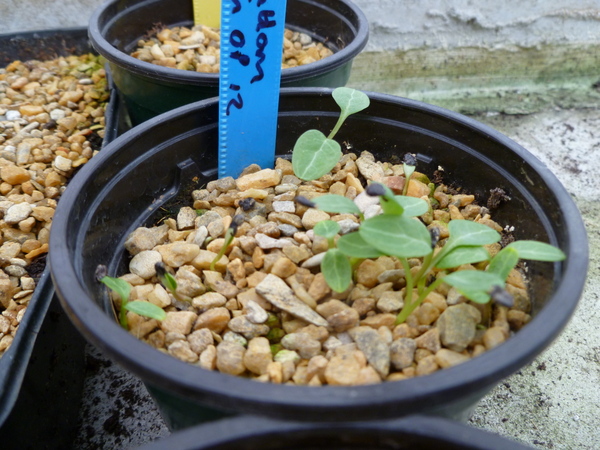Hellebore sowing instructions

Picture of seeds germinating in November last year.
- Hellebore seed is best sown fresh, soon after harvesting, otherwise it may go dormant and not germinate for several years. Ideally sow your seed as soon as it arrives in a peat or soil based compost in small seed trays or pots. DO NOT STORE IN THE FRIDGE. If you cannot sow it straight away, just keep them in a cool room.
- Just scatter the seed on top of the compost and then cover with a layer of grit or perlite.
- They are best left out in the open, but it’s as well to protect against wildlife having a scratch around by covering with some wire netting or similar. You can also cover with another pot or seed tray of the same size. Try to keep them from drying out and watch out for mice as they are rather partial to the seed.
- Hellebore seed can take a long time to germinate even sown fresh. They need to be exposed to a period of heat and then cold. Here in Brittany, we usually see the beginning of germination as soon as the temperatures drop in November but it may be later depending on the local temperatures. As soon as they germinate remove the covering netting or pot.
- Wait until there are two fully opened leaves before pricking out into small pots. If possible bring into a cool greenhouse or cold frame. If not, just leave the pots in a sheltered place in the garden, you do not have to keep them frost-free.
- Plant out in the garden the following spring or earlier if they are big enough. They will do best in semi-shade and like quite rich soil so add some organic matter when you plant them out.
- Please note that hellebores will usually only flower two or three years after sowing.
